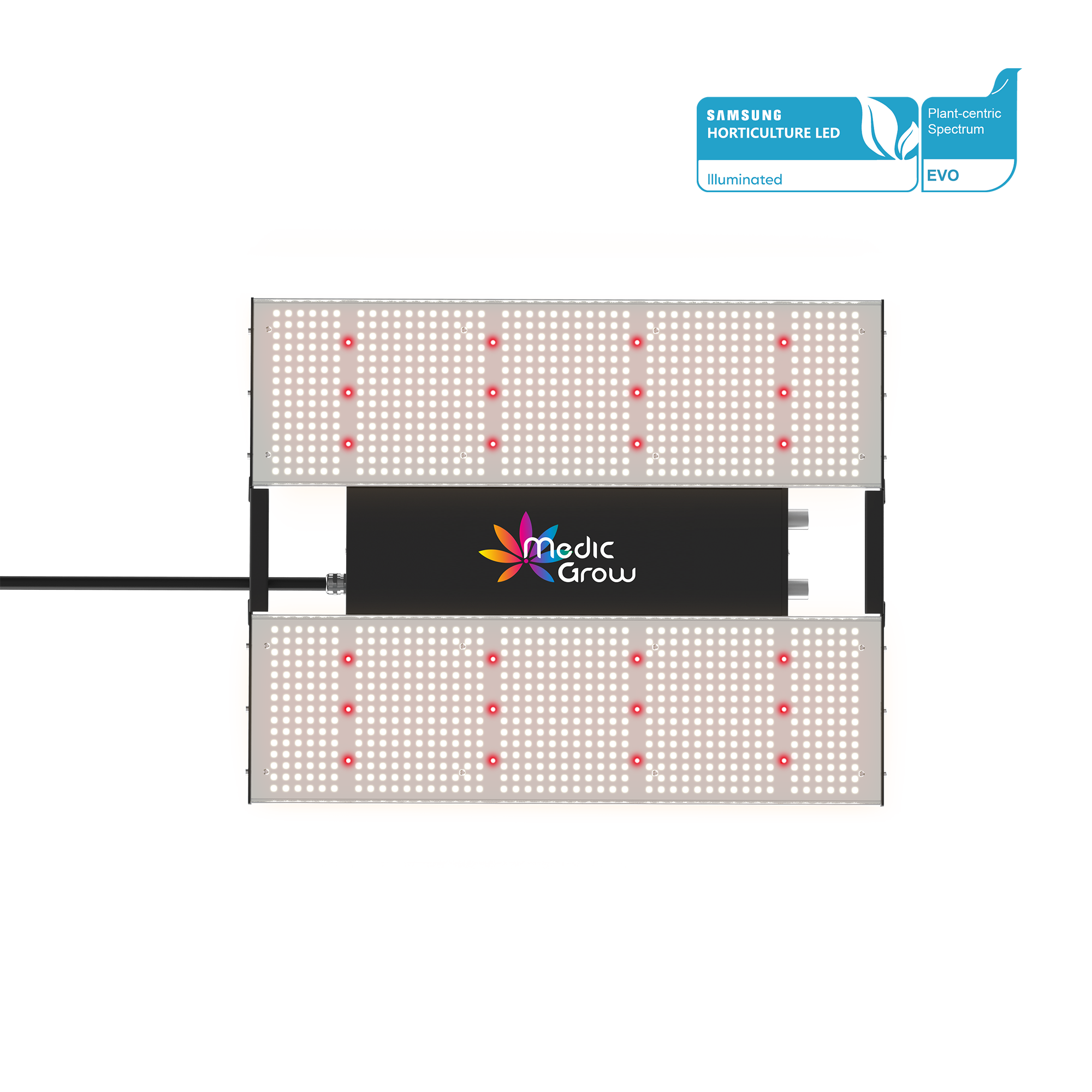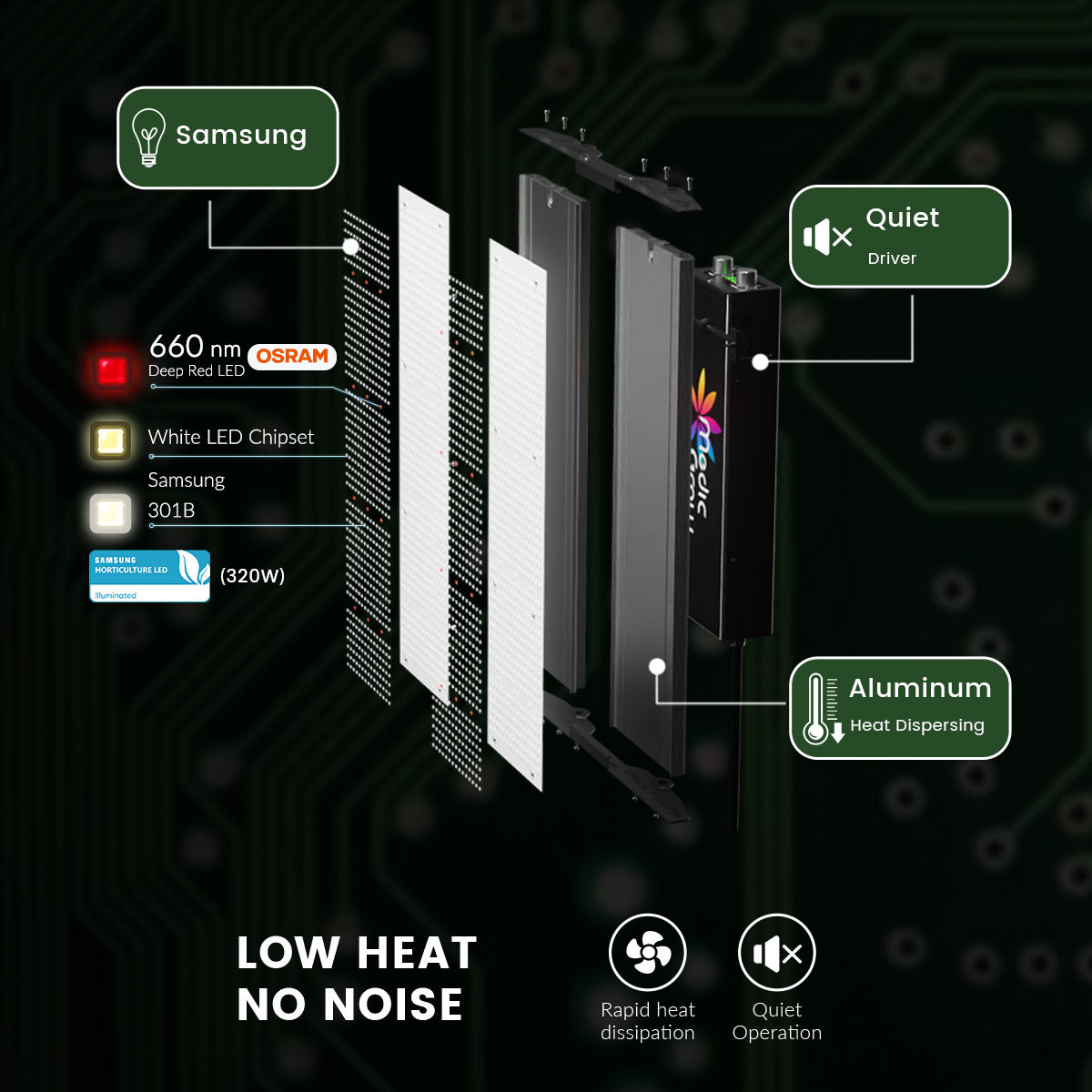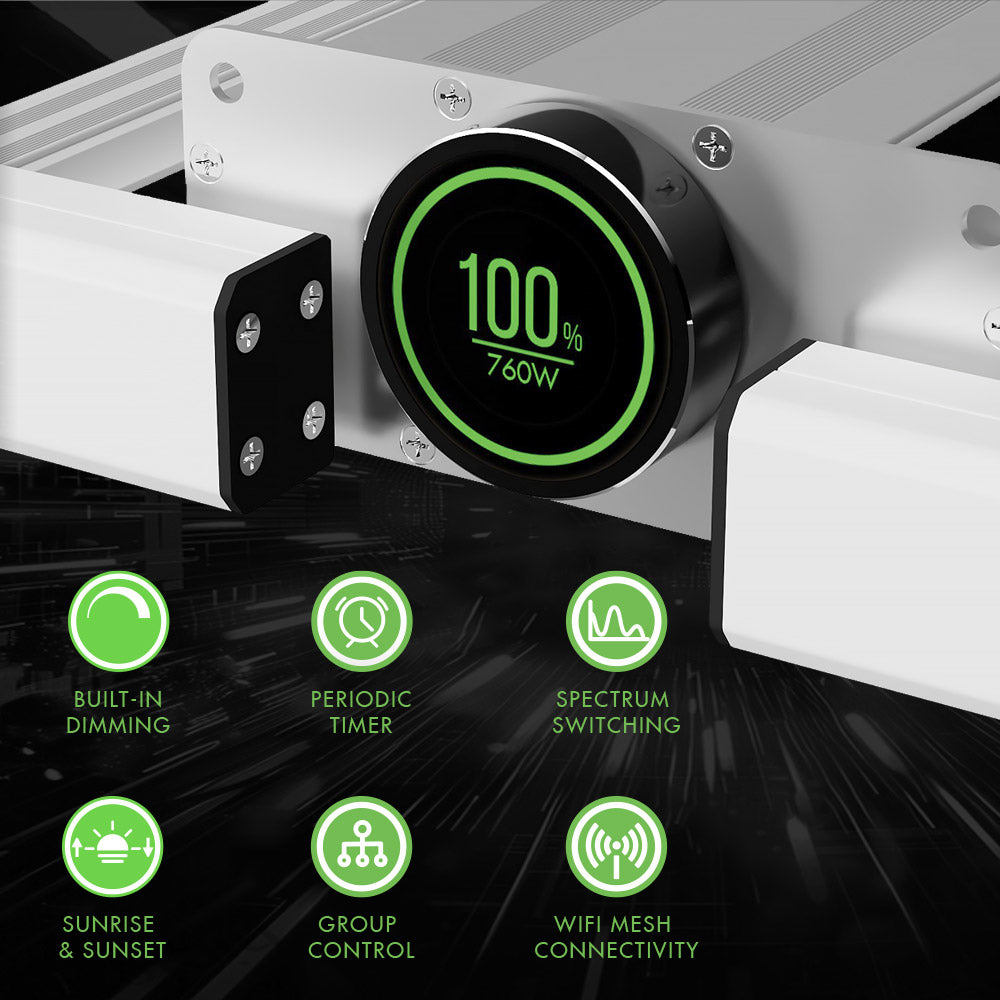
How to Use LED Grow Lights And UV/IR Bar
Indoor gardening has become increasingly popular in recent years. It’s a great way to enjoy the beauty of plants without having to worry about the elements of nature. With the right setup, you can create a thriving garden inside your home. One key component of indoor gardening is the use of LED grow lights and UV/IR bars.
This blog will explore how to use these two tools to create the perfect environment for your indoor plants. You’ll learn about the benefits of using LED grow lights, which are the best hydroponic grow lights, as well as how to set up growa tent kit and UV/IR BAR correctly.
- Part 1: When Should You Use LED Grow Lights, and Do You Need Them?
- Part 2: How to Use LED Grow Lights
- Part 3: How to Hang LED Grow Lights
- Part 4: When to Use Spectrum V1/F1 And How to Adjust It
- Part 5: Ultraviolet and Infrared Benefits For The Plant
- Part 6: How to Use UV-IR Light On Plants
- Part 7: Conclusion
When Should You Use LED Grow Lights, and Do You Need Them?
You can use grow lights at night if you expect to use them for the entire life cycle of the plant. This is provided that it follows a routine every day. For healthy plant growth and development, you must use grow lights to provide a regular lighting cycle. In summary, two 600-watt LED lights, such as the 1000W-LED Grow Light, are required to provide adequate lighting in a tent the size of a 5 x 5.

Additionally, you need LED grow lights for growing tents because all these indoor plants need light for photosynthesis. With their low energy consumption, low heat, and color-optimized development, LED lights are the most effective and customer-friendly way to grow plants at home compared to fluorescent or incandescent lighting.
How to Use LED Grow Lights
The following steps describe how to use LED grow lights:
- Step 1:
As the lights are hung above the plants, adjust their height. Fit the light 300 mm above the plant when it is in the early stages of vegetative growth. This guarantees the shortest inter-nodal length and offers nodes.
You must also increase the distance (which may be between 300 and 600 mm) between the light and the plants during the vegetative stage. For the light to reach the lower branches of plants with many leaves, the light must be lower. You can maintain a height of 300–600 mm from the canopy during the nascent stage of flowering. However, the clear height above the canopy is 400 mm.
- Step 2:
Change your watering technique. If you're just getting started with LEDs, watering could be problematic.
The majority of watering instructions are based on HPS lighting. But you must also ensure you follow the watering instructions that come with LED lighting. Evaporation happens throughout this process, which is why watering is required.
- Step 3:
When your plants are growing under LED lights, add Cal-Mag. But if you are using a hydroponic system with decreased evaporation, less nutrient topping is required.
- Step 4:
You must add more heat to the room in the winter. The plants' growth will be accelerated. Compared to HPS lighting, the growing area with LED grow lights generates significantly less heat. Because of this, you should monitor the plants using LED grow lights over the winter.
How to Hang LED Grow Lights
Understanding how to hang grow lights to best suit their needs is essential for growers. It involves the following steps:
- Determine the best height for your LED grow light. Generally, LED grow lights should be hung 18–24 inches above the tops of the plants, but this may vary depending on the type of light you are using. Then, start by installing the necessary hardware for hanging your LED grow light. This will usually consist of a hanging hook and chain, as well as a sturdy mounting bracket.
- Connect the hanging hook to the mounting bracket and chain. Make sure the hook is securely fastened to the bracket, as it will be supporting the weight of the grow light.
- Install the LED grow light onto the mounting bracket.
- Hang the LED grow light from the hook and chain at the recommended height. Make sure the light is level and secure. Make sure the light is not too close to any plants, as the heat generated by the light can damage them.
- Plug in the grow light and turn it on. Monitor the temperature of the area around the LED light. If the temperature rises too much, move the light higher or further away from the plants. Generally, for all the above steps, you must ensure that you follow the manufacturer’s instructions.
When to Use Spectrum V1/F1 And How to Adjust It

The Medicgrow Spectrum X LED Grow Light uses 880 watts to offer a powerful 2376 mol/s of PPF output (2.7 mol/J at 277 AC) for successfully maximizing plant development, which will also improve the quality of your plants and lower operating expenses. You will have 4 adjustable spectrum options: V1, V1+UV&IR, F1, and F1+UV&IR, with 2 UV/IR LED panels that are easy to remove. For having these awesome features, as well as others, the Spectrum has become known as one of the best 5x5 grow lights in the market today.
The built-in LED display includes information about the chosen spectrum, real wattage, PPF value, and more! Two rotating knobs are positioned on top of the screen. To set the lighting schedule to 6/12/14/16/18 hours per day, turn the knob to the left. To set the brightness at your preferred level, flip the knob to the right.
When to Use the Spectrum V1/F1
The balanced blue and red wavelengths of the V1 spectrum are crucial for the vegetative stage. A sufficient amount of deep red is provided by F1, which encourages more photosynthesis for blooming. A UV light for plants or IR LED could be added to your plants as they get closer to flowering to encourage strong stem development, ideal node spacing, and more flowers.
What Exactly Is UV/IR Light?

Both infrared (IR) and ultraviolet (UV) light, originating from the sun, are included in the electromagnetic spectrum. These two types of light waves are invisible to the human eye. UV waves are more intense than IR waves while being shorter.
A powerful UV-IR LED bar grow light is a high-performance, LED full-spectrum light solution for commercial horticulture growth when growing indoor plants with these light waves. It is also the ideal kind of grow light for herbs since it promotes the growth of beneficial compounds like essential oils.
Visible Light and Invisible Light
Whether or not the human eye can see it, light, which is an electromagnetic wave, is typically separated into visible light and invisible light.
- Visible light: although most individuals can only see electromagnetic waves with wavelengths between 400 and 760 nm, certain individuals can see waves with wavelengths as wide as 380 to 780 nm.
- Invisible light: as the name suggests, invisible light is light that cannot be seen by the human eye. This includes the ultraviolet, infrared, and far-infrared wavelengths that we are all too familiar with.
Ultraviolet and Infrared Benefits For The Plant
Although these lights are frequently thought to be bad for people and plants, they have a lot of positive effects. These benefits include;
- Green herb reacts in an intriguing way to sunburn brought on by UV and IR light wavelengths.
- UV radiation also helps to reduce the leaf area, leaf thickness, resin and scent compounds production, plant height, and plant thickness.
- Green herb plant development may benefit more from exposure to UV and IR light.
- UV and IR radiation encourage photosynthesis in green herbs as well.
- UV-IR radiation also stops the development of mold and fungus on green herbs.
For further information about the Benefits of the plant, Welcome to this: Do Indoor Plants Need UV?
How to Use UV-IR Light On Plants
The broad application of UV and IR to green herb production is described in the following guide.
You should give your plants between 16 and 18 hours of sunshine each day throughout the vegetative stage to help them develop into strong, high-yielding plants. You can also give them an additional hour of UV light each day.
At the flowering stage, switch to a more natural light cycle, giving those plants 12 hours each day of light and darkness. To increase the yield and strength, set your lights to a medium level. In the final 2-3 weeks of flowering, increasing the amount of additional UV light to 120 minutes may result in higher concentrations and chemical profiles.
If you want to employ supplemental IR light effectively, give it to your plants for 30 minutes just before you turn out the lights for the day. Give your plants 10 minutes of IR light 30 minutes before the lights are to be shut off, then turn the IR lights off for the following 10 minutes. Finally, return the lights to provide an additional 10 minutes of IR light.
How much UV/IR light is needed for each growth stage of the plant?
The amount of UV/IR light needed for each growth stage of a plant will vary depending on the strain of green herb and the desired outcome. Generally speaking, plants require more UV/IR light during the vegetative stage than during the flowering stage. During the vegetative stage, the plant should receive at least 15-20 moles of UV/IR light per day. During the flowering stage, the plant should receive 8-10 moles from the UV/IR bar grow light per day. It is important to note that too much UV/IR light can be damaging to the plant, so it is important to monitor the light levels closely.
Conclusion
Overall, LED grow lights and UV-IR bars are great tools for those wishing to grow plants indoors or in small spaces. They are energy efficient, emit little heat, and provide the necessary light for both flowering and vegetative growth. Thus, they are the best grow lights for herbs, including green herbs.
However, the use of LED grow lights and UV IR bars requires some initial setup, but the results are well worth the effort. With the right setup, as described in this article, you can produce strong, healthy green herbs quickly and easily. To get started you start with lights one of the best LED grow lights for a 5x5 tent, the Spectrum X.
Featured Products
Blog Posts
Contact Us with Any Idea!
- Choosing a selection results in a full page refresh.
!
































